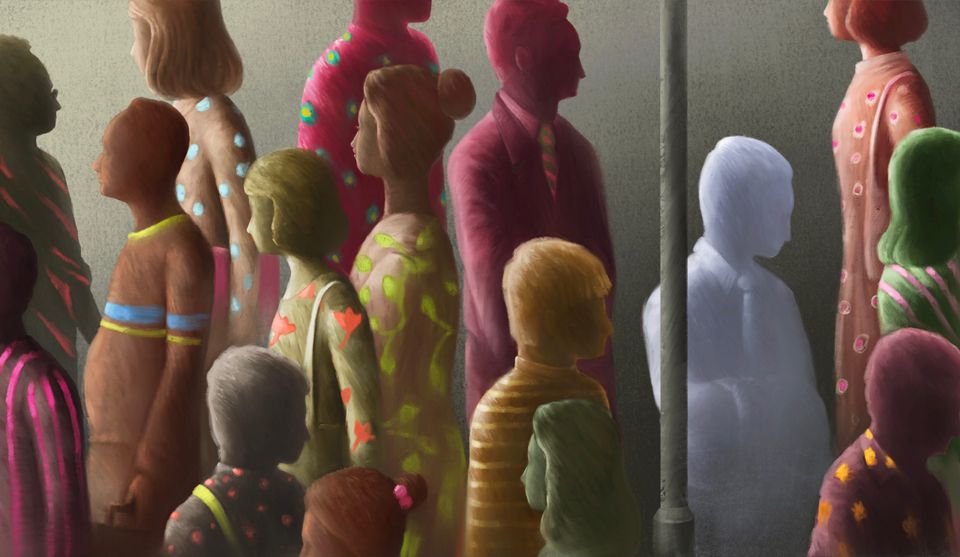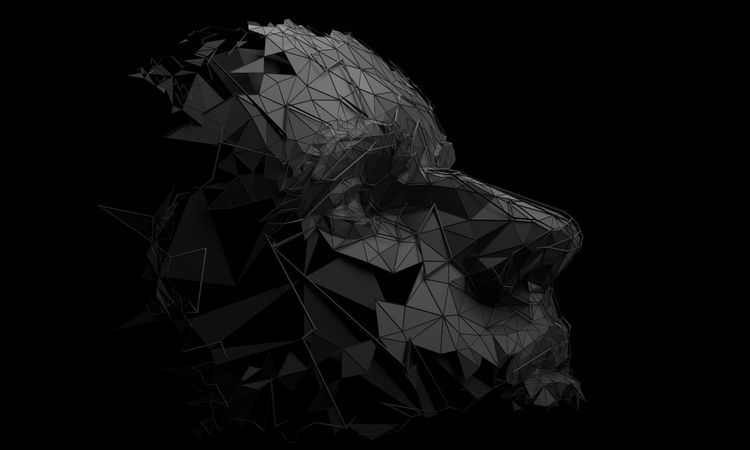Why is Mental Illness so Common in 2021?

“It’s here. It’s there. It’s everywhere. Tears soak each card the dealer’s dealt. Time taught me to see every second as heaven even though they’re perfectly disguised as hell.” — Eyedea
Mental illness is becoming an epidemic. People used to say you were only a few degrees of separation from someone who’s been affected by cancer. In 2021 mental illness has filled that role, only if we’re not the ones who are mentally ill.
All of us know pain in some way, and that doesn’t take away from the legitimacy of anyone’s suffering. Usually, suffering doesn’t differ by order of quantity. It differs by order of category. It’s always unique to the individual.
I wouldn’t take the Buddhist route and claim life is nothing but suffering. But it’s obvious that if you read the minds of most people in 2021, you would find a fair amount of fear, hurt, trauma, and weight.
Is this just the way things are? Is there something about the modern world that’s driving us to these lows? Why is mental illness so prominent in the United States and the west? What’s going on here?
Mental Illness in the Third World
For decades mental illness was thought to be a first-world phenomenon. Anxiety and depression were only possible for those who could afford to dwell on things in material comfort. According to an article published in the Guardian titled, “Busting the Myth That Depression Doesn’t Affect People in Poor Countries, these beliefs are being proven wrong.
The article chronicles the discoveries of Vikram Patel, a psychiatrist whose work in Zimbabwe revealed that mental illness is a more global issue than we’ve been led to believe.
He traveled to Harare, Zimbabwe looking to prove that mental health issues in poor countries could be attributed to socioeconomic injustices, not first-world mental illness. He would talk with healers in Harare and ask about common problems they came across. The condition brought up most frequently was kufungisia, which roughly translated to “overthinking.”
The healers assured Patel that kufungisia was a result of poverty or illness, which confirmed his belief about socioeconomic troubles being the core of the problem. But when Patel asked the healer’s patients to describe kufungisia, they described it exactly as a person would describe depression. “Hopelessness, exhaustion, inability to confront their problems and a lack of interest in life.” This led Patel to a realization:
Far from exposing depression as a uniquely western phenomenon, Patel’s research in Zimbabwe led him to conclude that depression is a fundamental human experience. (Emphasis added).
To add further weight to Patel’s findings, the World Bank conducted a global study on health and disability in 1990 to determine how funds should be allocated for foreign aid. They discovered that mental illnesses like anxiety and depression were the most common sources of disability in the world. According to the Guardian:
In the poorest countries as well as the richest, and at every socioeconomic level in between, mental disorders were the greatest thief of productive life.
Mental illness was as pervasive in the third world as it was in the first. The difference is that richer countries are more likely to have the resources to treat these conditions, even if many still go without it.
On a positive note, Patel and other experts published a series of articles in 2007 that addressed the need for mental healthcare in poor countries. Since then, global mental health has become a movement. Even the United Nations has acknowledged that mental illness is a worldwide issue that needs addressing.
Patel’s findings indicate that inner suffering has a common place in the human heart. When life gets in the way of the things people care about, they can just as easily become mentally ill as anyone else. But why are these conditions reaching a fever pitch in the developed world?
Mental Illness and My Generation
Millennials have a reputation for being sad. But, we’re also more likely to be open and accepting about mental disorders and personal traumas.
I would often wonder, “Is there something about Millenials that makes them this way, or has mental health awareness just increased?” Were past generations this troubled? Or is there something about modernity that’s making Millennials and Gen Z more prone to mental illness?
According to an article published by the American Journal of Pharmaceutical Education in 2018, college students have been struggling in the last decade.
The American College Health Association (ACHA) conducts an annual national survey that examines the health of college students. From their 2016 survey of 5099 graduate and professional students across 34 schools, the ACHA reports that within the last 12 months, 41.5% of students “felt things were hopeless,” 51.8% “felt very lonely,” 55.3% “felt overwhelming anxiety,” and 33.5% “felt so depressed that it was difficult to function.
Why is this happening? Dr. Gregg Henriques published an article in Psychology Today outlining the potential causes of an epidemic of this magnitude. He identified several reasons, but I’m going to highlight the five I feel are most prominent in 2021:
*Note: These are only possible answers to a complex problem involving all facets of modern society.
The Disease-Pill Model for Mental Illness
Medicalizing suffering is the standard in the western world. This is a difficult topic because psychiatric medications do help many people. But the culture dictates that it’s more scientific, and more rational, to medicate a brain rather than treat a person.
Psychiatric treatment is usually a combination of meds and therapy, but the fact that both mental illness and psychiatric drug use have skyrocketed in recent decades suggests that something harmful is occurring here.
Economic Pressure/Academic Standards
Being crippled by student loan debt is a common experience. Along with a widening wealth gap in the United States, the financial burdens on young people are unlike past generations.
In addition to that, rigorous university standards are fueling plenty of mental breakdowns. These factors are causing many to question the value of a college education.
Technology and Social Media
We get rivers of information pumped through our minds. In a typical internet scrolling session, we can be exposed to targeted advertisements, extreme viewpoints, grotesque imagery, troubling statistics (real or fake), endless distractions, and the curated lives of our peers.
Technology is a funnel for the insanity that used to lurk on the fringes of society to drip into the mainstream. All that is only as far away as our phones, and it’s been going on for years.
Self Esteem and Coddling
Nurturing a child’s self-esteem is important, but many feel it wasn’t handled correctly for young Millennials and Gen Z. There is controversy about this, but it’s worth mentioning. Rewarding a child for normal behavior, or for things they weren’t directly responsible for, corrupts their self-esteem.
Instead of letting millennials learn resilience and self-accountability after a failure (which would’ve nurtured self-esteem), many were coddled and helicopter parented instead. Being mentally ill doesn’t make you weak, but being weak could easily lead you to mental illness.
Lack of a Unifying Philosophy for Living
The western world is more secular than it’s ever been. For all the good that science, rationalism, and free thought have given us, being without an existential foundation has left many people with confused values.
I’m not religious myself, but instead of adopting belief systems like humanism or existentialism, many base their lives on empty materialism. Or in the worst cases, nihilism.
The developed world has created its own brand of madness. Younger generations deal with the painful aspects of modernity along with life’s normal pitfalls. But really, it’s not just Millenials and Gen Z. It’s the entire western world that’s struggling.
The Big Picture
Am I saying that everything hurts and life is a nightmare? Of course not. We should be in the business of solving these problems, not getting overwhelmed by them. Recovery, healing, strength, whatever you’d like to call it, hasn’t gone extinct. Trust me.
Suffering is fundamentally human, whether you call it chronic anxiety or kufungisia. We feel inner turmoil, but we also lift each other up and adapt.
Hurting makes sense, especially in today’s world. If you’re in pain, and you think everything is wrong right now, you are not crazy. In fact, you’re probably very sane.
There is no need to be ashamed of tears, for tears bore witness that man had the greatest courage, the courage to suffer. — Viktor Frankl
We get to choose how we approach life, no matter how deranged it might look.
The world is in a tough spot, and solving these problems is beyond the scope of a single post. So for now, let’s keep our solutions basic:
- Focus on making connections in real life. Stay in touch with those you love. Surround yourself with the best people you can.
- Consider limiting internet and social media time drastically. Remember that the media cares about your attention, not your wellbeing.
- Try to stay physically healthy.
- Seek professional help if you feel you need it.
- Pursue things that matter to you, not things people expect of you.
- Create and learn new things. Try to balance consuming with creating.
- Reflect. Practice gratitude. Try to be compassionate towards yourself.
Mental health struggles are something we all have in common right now. Maybe that can be our springboard for understanding each other



